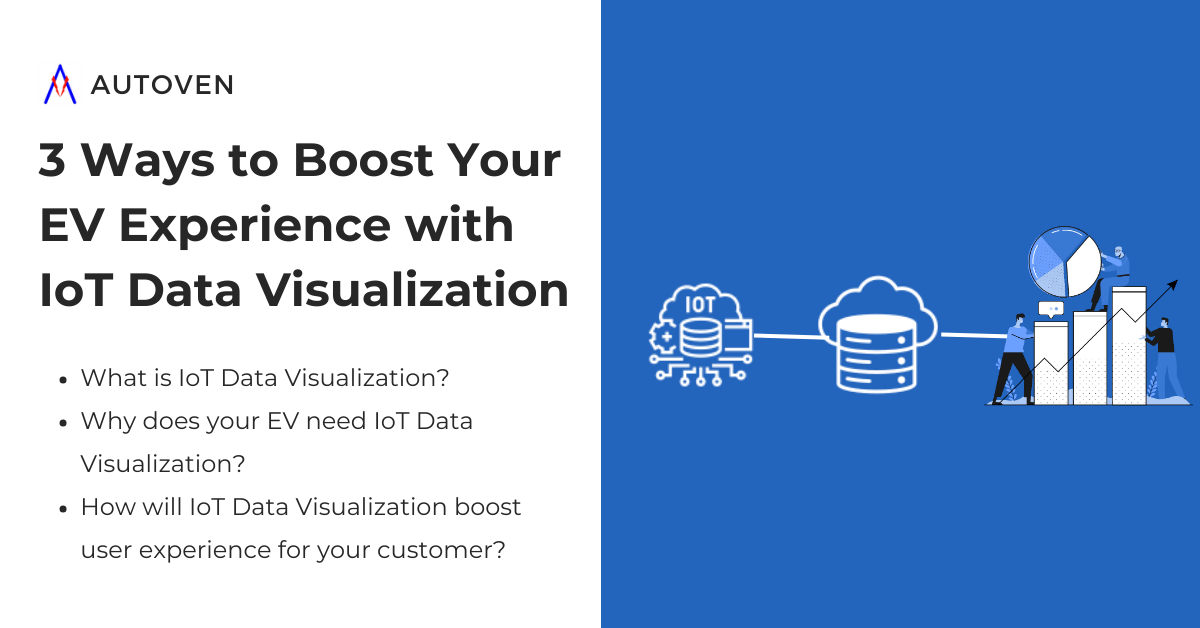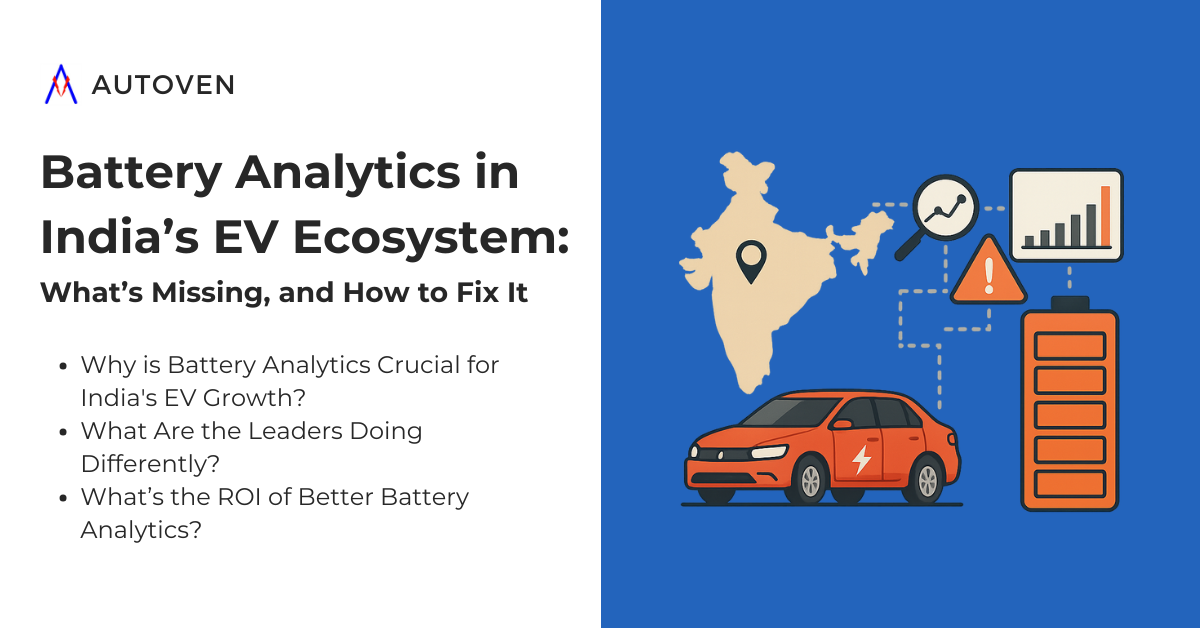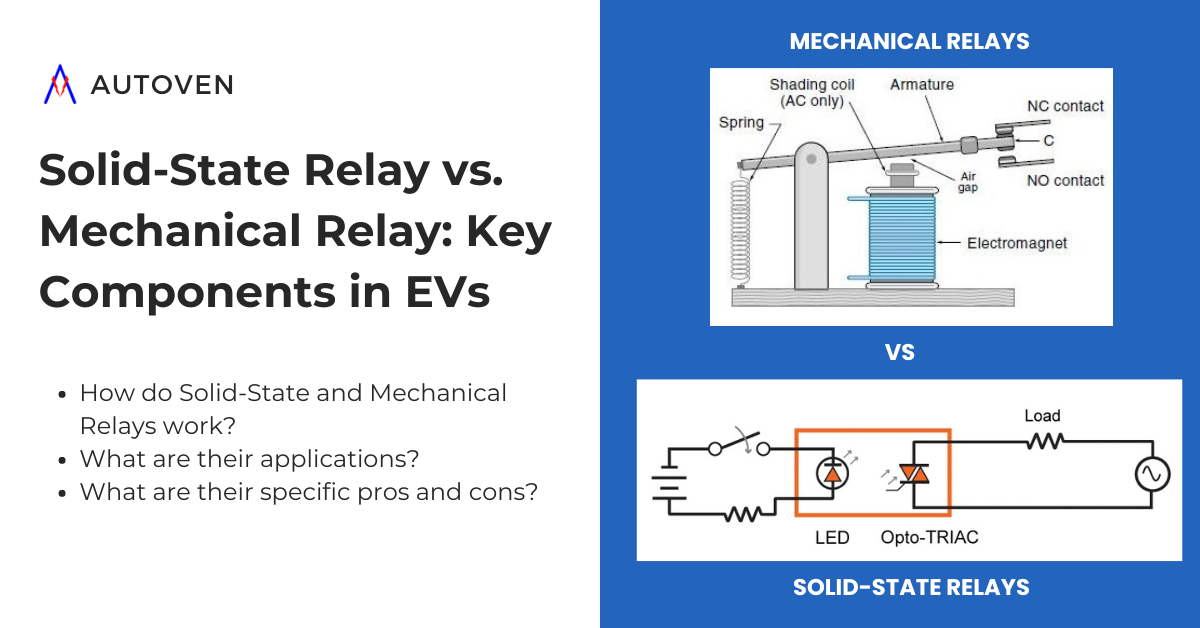Introduction
The Electric Vehicle (EV) industry is no exception in an era where data is gold. As the industry accelerates towards a smarter, more efficient future, the integration of the Internet of Things (IoT) stands at its forefront. A key aspect of this integration is IoT data visualization – a transformative tool that turns a sea of data into a canvas of insight. This blog explores the essence of IoT data visualization, its critical role in the EV sector, and how it can be effectively achieved to drive innovation and efficiency.
Understanding IoT Data Visualization in the EV Sector
IoT data visualization involves converting complex data gathered from IoT devices into understandable visual formats. For the rapidly evolving and data-centric EV sector, this means translating information about Vehicle Performance, Vehicle Health, and User Behavior into visuals that are not just readable but actionable. This process is essential for OEMs and industry professionals, aiding in interpreting trends, making predictive analyses, and understanding intricate data relationships.
The Pivotal Role of Data in the EV Industry:
Data is the lifeblood of software-defined vehicles. Every EV and its associated infrastructure generates a wealth of data points – from battery health, charging cycles, and energy consumption to driver behavior patterns and environmental interactions. This data is crucial for the day-to-day operation of EVs. It also helps achieve long-term strategic planning and innovation in the industry. Everything from vehicle design improvements to charging network expansions is defined based on data.
Data Complexity and Volume in IoT for EVs:
The complexity and sheer volume of data generated in the EV ecosystem is staggering. IoT devices in EVs and their infrastructure continuously stream data, contributing to what can be an overwhelming flood of information. This data, while valuable, can be challenging to interpret and use effectively without proper tools and strategies. It includes both numerical and text data with additional geospatial, temporal, and behavioral data, each requiring different methods of analysis and presentation.
The Critical Need for IoT Data Visualization in EVs
IoT data visualization is indispensable for EVs, where real-time data and predictive analytics are the bedrock of progress. It enables stakeholders to monitor their EV’s battery health, optimize charging schedules, manage energy consumption, and predict maintenance needs effectively. Visualization is not just about making pretty graphs; it’s about transforming complex, multidimensional data into an immediately comprehensible and actionable format. By transforming raw data into a visually digestible format, it empowers decision-makers to make swift, informed decisions. Effective data visualization can significantly reduce operational downtime and enhance energy management, which is crucial for the EV industry’s growth.
3 Ways to Boost EV Experience with IoT Data Visualization
1) Optimizing Battery Management and Performance:
Instance: Monitoring and Improving Battery Health
Application: EV batteries provide a wealth of data about battery health, including charge levels, temperature, voltage, and cycle life. By visualizing this data, OEMs can identify patterns and anomalies that affect battery performance and longevity.
Example: Suppose an OEM notices battery efficiency drops significantly at higher temperatures, as shown in the figure. The range drops considerably below the rating at temperatures above 30 degrees Celsius. This insight can lead to the development of better thermal management systems in future EV models, enhancing overall battery life and performance.

Value: This visualization aids in predictive maintenance, improving battery life, and informing design improvements, ultimately leading to more reliable and efficient EVs.
2) Improving Vehicle Design and User Experience:
Instance: Tailoring EV Design to User Preferences and Behavior
Application: IoT data visualization can reveal insights into how drivers interact with various features of their EVs, such as infotainment systems, driving modes, and regenerative braking systems.
Example: Data might show that many users frequently adjust the regenerative braking settings for a more sporty driving experience. Take a look at the figure below. It shows a significant number of users disabling regenerative braking. The OEM might consider enhancing this feature in their future model. Visualizing user interaction data could also lead to redesigning the vehicle’s interface for more intuitive use.

Value: By understanding user preferences and behaviors through data visualization, OEMs can design EVs that better meet customer needs, improving user satisfaction and brand loyalty.
3) Predictive Maintenance and Enhanced Vehicle Reliability:
Instance: Proactive Identification of Vehicle Maintenance Needs
Application: IoT sensors in EVs generate data on various components’ performance, such as the electric motor, inverter, and onboard electronics. Visualizing this data helps identify patterns that indicate upcoming maintenance needs or component failures.
Example: Consider an OEM that uses data visualization to track the performance of electric motors across its fleet. They notice a recurring pattern where a specific part shows decreased efficiency after a certain mileage. As shown in the figure, the bearings are failing much more than expected after 10000 kilometers of usage. By addressing this in maintenance schedules and future designs, they can proactively prevent breakdowns and enhance the reliability of their vehicles.

Value: This approach reduces maintenance costs and vehicle downtime for consumers, enhancing brand reputation. Predictive maintenance, informed by data visualization, ensures that vehicles remain in optimal condition, potentially extending their lifespan and operational efficiency.
Bridging the Gap Between Data and Decision-Making

IoT data visualization bridges the gap between raw data and strategic decision-making. It enables stakeholders in the EV sector to move beyond gut feelings or rough estimates, basing their decisions on concrete, visually represented data insights. This capability is crucial in an industry where precision and efficiency are paramount and decisions have significant financial, operational, and environmental impacts.
Enhancing Consumer Engagement and Trust Through Visualization:
Furthermore, IoT data visualization is vital in enhancing consumer engagement and trust. Through intuitive and informative visualizations, EV users can understand their vehicle’s performance and usage patterns, leading to a more connected and satisfying ownership experience. This level of engagement is key to fostering consumer trust and loyalty, which are critical in the competitive EV market.
Benefits of Effective IoT Data Visualization:
IoT data visualization in EVs offers myriad benefits. They are:
Informed Decision-Making:
- Transforms complex data into understandable visuals, aiding in clearer decision-making processes.
- Helps identify trends and patterns that might not be obvious in raw data, guiding both strategic and operational decisions.
Enhanced Efficiency and Performance:
- Enables quick identification of issues and opportunities, leading to faster and more efficient responses.
- Assists in optimizing EV performance, including battery management and energy consumption, through detailed data analysis.
Improved Predictive Maintenance:
- Facilitates proactive maintenance strategies by visualizing wear and tear on EV components.
- Reduces unexpected breakdowns and extends the lifespan of EVs, saving costs and time.
Better Energy Management:
- Provides insights into energy usage patterns, contributing to more efficient energy utilization.
- Supports the integration of EVs with smart grids, enhancing overall energy sustainability.
Increased Customer Satisfaction and Engagement:
- Empowers customers with data about their vehicle usage and performance, enhancing their ownership experience.
- Builds trust and loyalty through transparency and valuable, personalized insights.
Operational Excellence for EV Fleets:
- Offers fleet operators a comprehensive view of their fleet’s status, including vehicle health and operational efficiency.
- Aids in route optimization and scheduling, leading to improved logistics and cost savings.
Rapid Identification and Resolution of Bugs:
- Enables immediate detection of anomalies or malfunctions with accurate location and nature of the issue, leading to quicker diagnostics and bug fixes.
- Enhances the overall reliability of EVs by reducing the time between issue identification and resolution, thereby minimizing user disruptions.
Facilitates Regulatory Compliance:
- Helps monitor and report data relevant to environmental and safety regulations.
- Simplifies compliance processes with accurate and easily accessible data visualizations.
These benefits highlight how IoT data visualization is a technological tool that can act like a strategic asset in the EV industry, driving improvements across various fronts, from operational efficiency to customer experience.

Conclusion:
In conclusion, IoT data visualization is a pivotal component in the advancement of the EV industry. Turning complex IoT data into clear, actionable insights empowers you to make more informed decisions, streamline operations, and foster innovation. As the industry continues to grow and evolve, mastering IoT data visualization will be key to unlocking its full potential, driving the EV industry towards a more efficient, sustainable, and technologically advanced future.
Autoven’s AV Dashboard is a software solution that handles EV OEMs’ data visualization needs with specialized dashboards. With an elegant design and minimalistic UI, the AV Dashboard displays the vast sea of data in a comprehensible and actionable format. Backed by Autoven Platform and its array of powerful analytical engines on the backend, the AV Dashboard helps EV OEMs derive invaluable insights about their vehicles. To learn more about our AV Dashboard, feel free to get in touch with our team.



